Welcome to the world of one of the most formidable creatures lurking in the murky waters of the Amazon – the Black Caiman.
This beast is not your average reptile; it’s a living relic from the time of dinosaurs, ruling the top of the food chain in its watery realm.
What is the Black Caiman?
Imagine a creature so stealthy and powerful, it’s considered the Amazon River’s version of a boss level in a video game. That’s the Black Caiman for you. Part of the Alligatoridae family, this creature is often mistaken for an alligator by the untrained eye. But make no mistake, the Black Caiman is in a league of its own. It’s the largest predator in the Amazon ecosystem, playing a crucial role in maintaining the balance of its aquatic environment.
The Black Caiman (Melanosuchus niger) has seen its share of drama, coming dangerously close to extinction in the 20th century due to heavy hunting for its valuable hide. Thanks to conservation efforts, their numbers have seen an uptick, but they’re not out of the woods yet. This creature’s story is one of resilience, a testament to the wild’s ability to bounce back, given the chance.
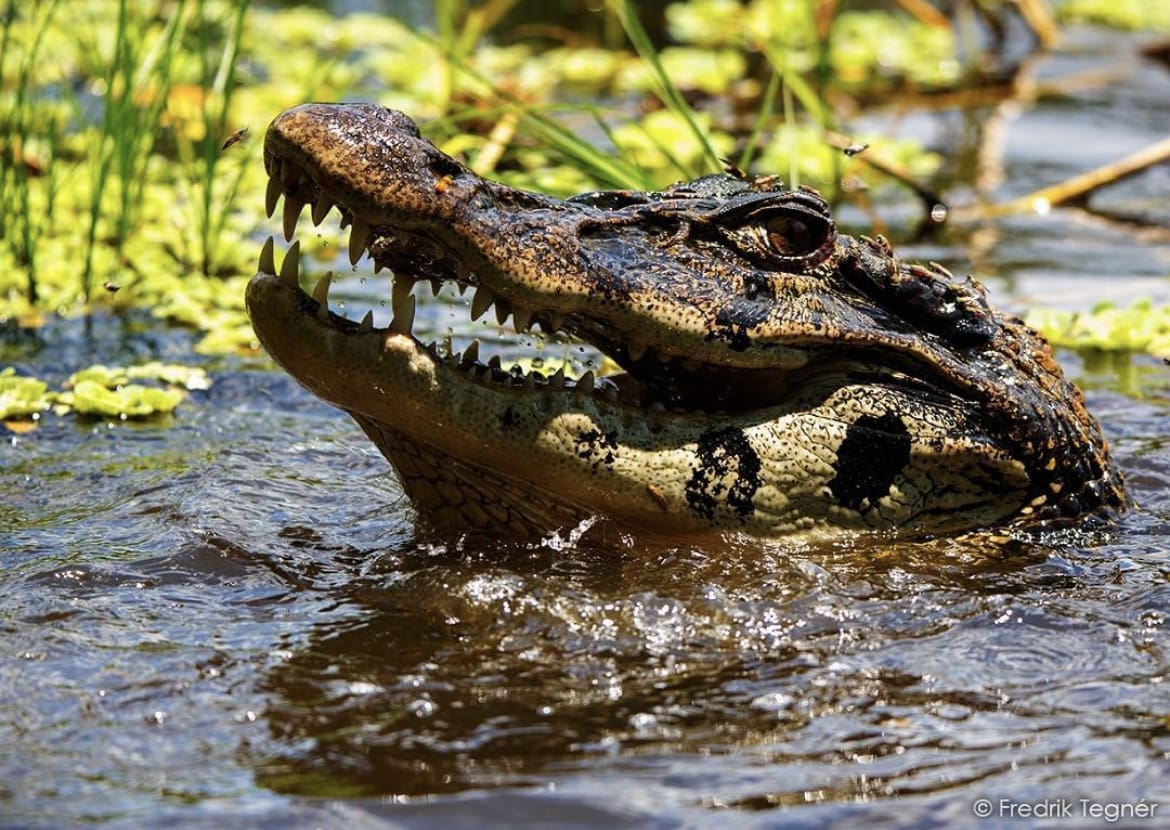
What do Black Caimans look like?
Now, let’s paint a picture of this river monster. The Black Caiman is no small fry; it’s a hulking mass of muscle and scales with a demeanor that says, “I’m the boss around here.” Their bodies are streamlined for silent stalking, equipped with powerful jaws capable of snapping up anything unlucky enough to cross their path.
Their skin, a rugged armor dotted with osteoderms (bony plates), provides defense against any would-be predators, not that many dare to challenge them. With a snout that’s slightly broader than that of true alligators and eyes that shine with a predatory gleam, the Black Caiman is the epitome of an apex predator designed for dominance in its domain.
How big are Black Caimans?
When it comes to size, the Black Caiman doesn’t disappoint. Juveniles might start cute and manageable, but give them a few years, and they grow into aquatic behemoths. On average, adult Black Caimans can reach lengths of up to 4 to 5 meters (13 to 16 feet), with some old-timers stretching out to a jaw-dropping 6 meters (about 20 feet). Weighing in at over 1,000 kilograms (2,200 pounds), these are not creatures you’d want to encounter on a casual swim in their territory.
Their sheer size plays a critical role in their environment, allowing them to hunt a variety of prey and maintain the delicate balance of their ecosystem. It’s this combination of stealth, power, and size that makes the Black Caiman the undisputed ruler of its watery kingdom.

Black Caiman Skin
The skin of a Black Caiman is like the armor of a medieval knight, tough and battle-ready. It’s a thick, scaly shield that provides ample protection against the threats of their environment. The texture is rough, adorned with osteoderms, those bony deposits that make their hide feel like a natural chainmail. This rugged exterior isn’t just for defense; it’s a masterpiece of evolution, allowing the Black Caiman to slip through the water with minimal resistance while staying camouflaged in the murky depths of its riverine home.
Their skin color, a dark, almost sinister hue, aids in their nocturnal ambush strategies. By blending with the shadowy waters, they become nearly invisible to prey, a trait that underscores their role as apex predators. This unique skin has been both a blessing and a curse, as it once made them a target for hunters seeking their hides for luxury goods. Thankfully, conservation efforts have helped reduce this threat, allowing us to appreciate their natural armor’s beauty and function without the shadow of exploitation.
Black Caiman Eyes
Ever seen those horror movies where the monster’s eyes glow ominously in the dark? That’s pretty much the vibe with Black Caiman eyes. Their eyes are specially adapted for night hunting, featuring a reflective layer called the tapetum lucidum, which enhances their ability to see in low light conditions. This means when light hits their eyes at night, they shine back with an eerie glow, a telltale sign of their presence in the dark waters.
But it’s not just about the cool glow. Black Caiman eyes are positioned on top of their heads, allowing them to lurk almost entirely submerged while keeping a watchful eye on potential prey (or nosy humans). This strategic placement, combined with their sharp vision, makes them formidable hunters, able to spot a fish swimming by or a careless capybara on the riverbank.
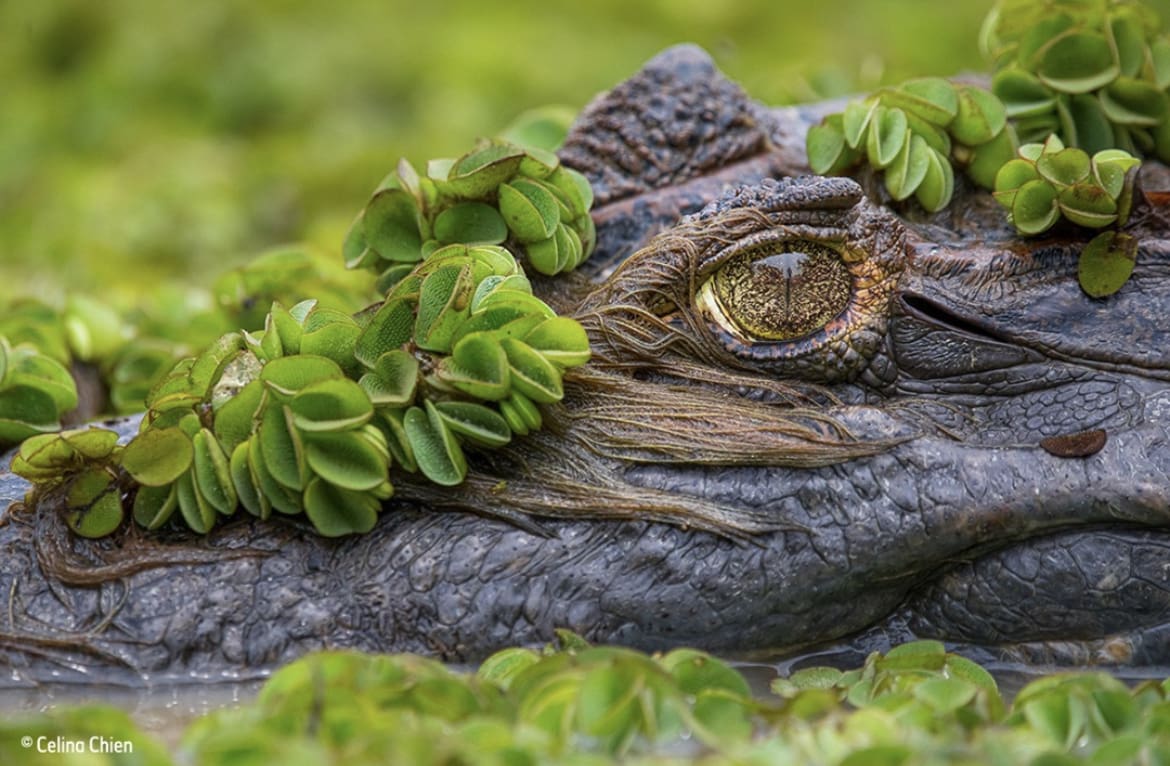
Black Caiman Colouration
The color scheme of the Black Caiman is less about fashion and more about function. Their dark, almost black coloration is a natural adaptation to their aquatic lifestyle, providing them with exceptional camouflage abilities. This stealth mode enables them to blend seamlessly with the shadowy waters and vegetation of their habitat, making them nearly invisible to prey and predator alike.
But it’s not all about being unseen. The dark color also plays a role in thermoregulation, absorbing heat from the sun to help these cold-blooded creatures warm up. On the flip side, they can cool down by simply slipping into the cooler waters of their river homes. It’s this combination of stealth and physiological regulation that makes the Black Caiman’s coloration a key feature in their survival toolkit.
What do Black Caimans eat?
When it comes to dining, Black Caimans are not picky eaters. Their diet is as robust as their physique, ranging from fish and reptiles to birds and mammals. Yes, you read that right—these guys can take down anything from a piranha to a capybara, and they’re not above snagging a sloth for a snack. At the top of their menu? Fish, the staple of their diet, which they snatch with lightning-fast precision.
Larger Black Caimans have been known to tackle more formidable prey, including deer and even anacondas. Yes, anacondas. It’s a true battle of the titans when these predators clash. The Black Caiman’s hunting strategy is a mix of patience and power; they often wait submerged near the water’s edge, bursting out to seize their prey with deadly accuracy. This adaptability in their diet underscores their role as apex predators, ensuring the balance of their aquatic domain is maintained.
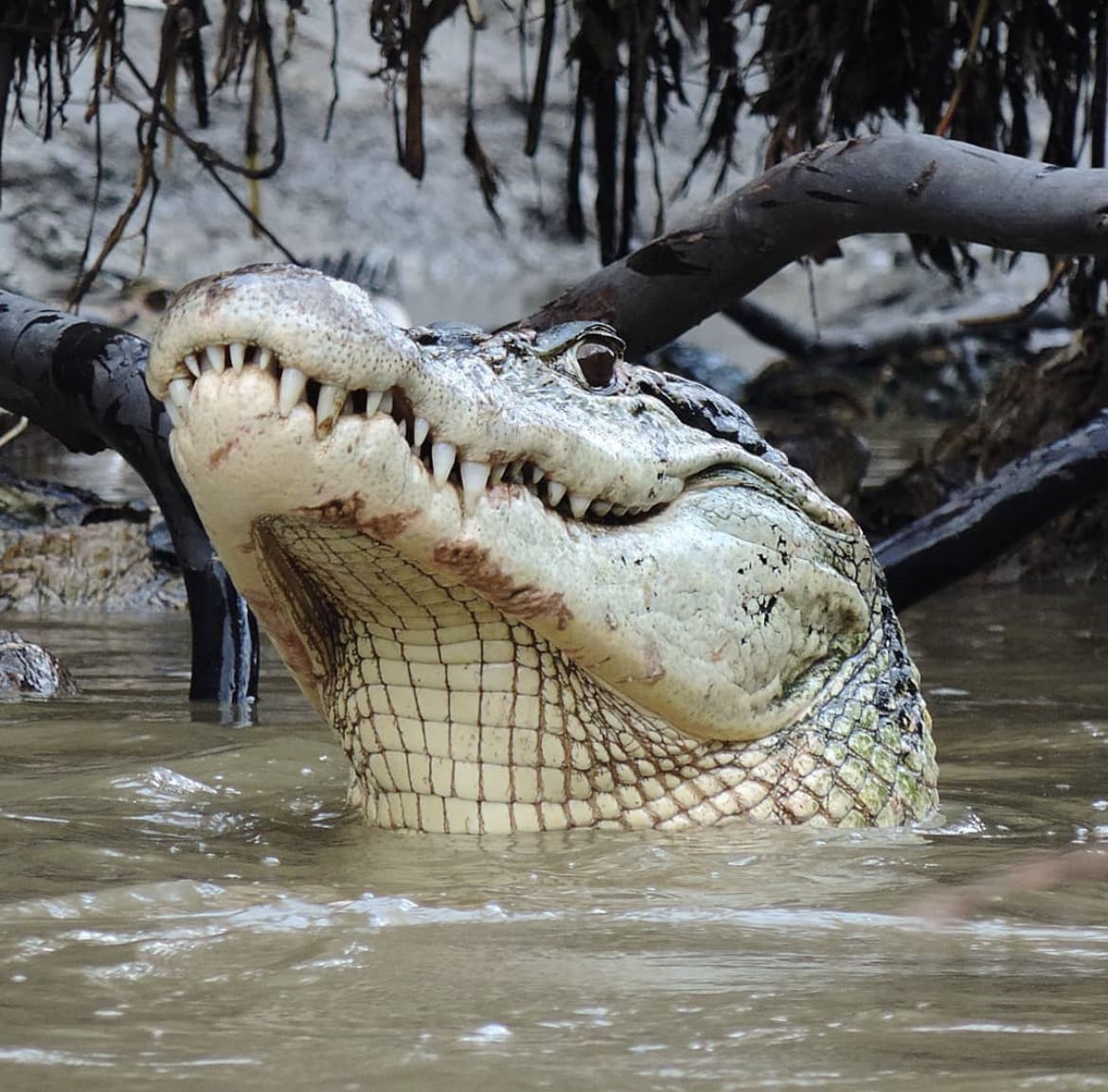
Black Caiman Social Structure
You might wonder, do these solitary hunters ever take a break from their loner lifestyle to hang out with friends? Well, sort of. Black Caimans are primarily solitary, especially when it comes to hunting, but they do come together during mating season or in areas where food is abundant. These gatherings are not exactly social mixers; rather, they’re practical assemblies driven by necessity.
Interestingly, their social structure is not as rigid or hierarchical as some other animal societies. Dominance is typically size-based—the bigger you are, the more respect you command. However, when it comes to sharing a bountiful fishing spot or a prime sunbathing bank, there’s a surprising level of tolerance among these giants. This behavior highlights a complex balance between competition and coexistence, a testament to the nuanced social dynamics at play in the animal kingdom.
How do Black Caimans reproduce?
Now, let’s talk about the birds and the bees, or rather, the caimans and the eggs. Reproduction is a fascinating aspect of the Black Caiman’s life, beginning with courtship rituals that include vocalizations and gentle nudging. Yes, these fearsome predators can be quite tender when wooing a mate.
Females are responsible for nest building, usually choosing a secluded spot to lay 20 to 40 eggs, which they cover with vegetation. This natural incubator not only hides the eggs from predators but also regulates temperature. The sex of the offspring is determined by this temperature—a peculiar but common trait among reptiles.
After about 6 weeks, the hatchlings emerge, signaling their arrival with vocalizations that prompt the mother to uncover the nest. These miniature versions of their parents are not left to fend for themselves; the mother caiman will protect her young for up to two years, showcasing a level of parental care that belies their cold-blooded nature. This early life protection is crucial, as young caimans face numerous predators, including birds of prey and other carnivorous mammals.
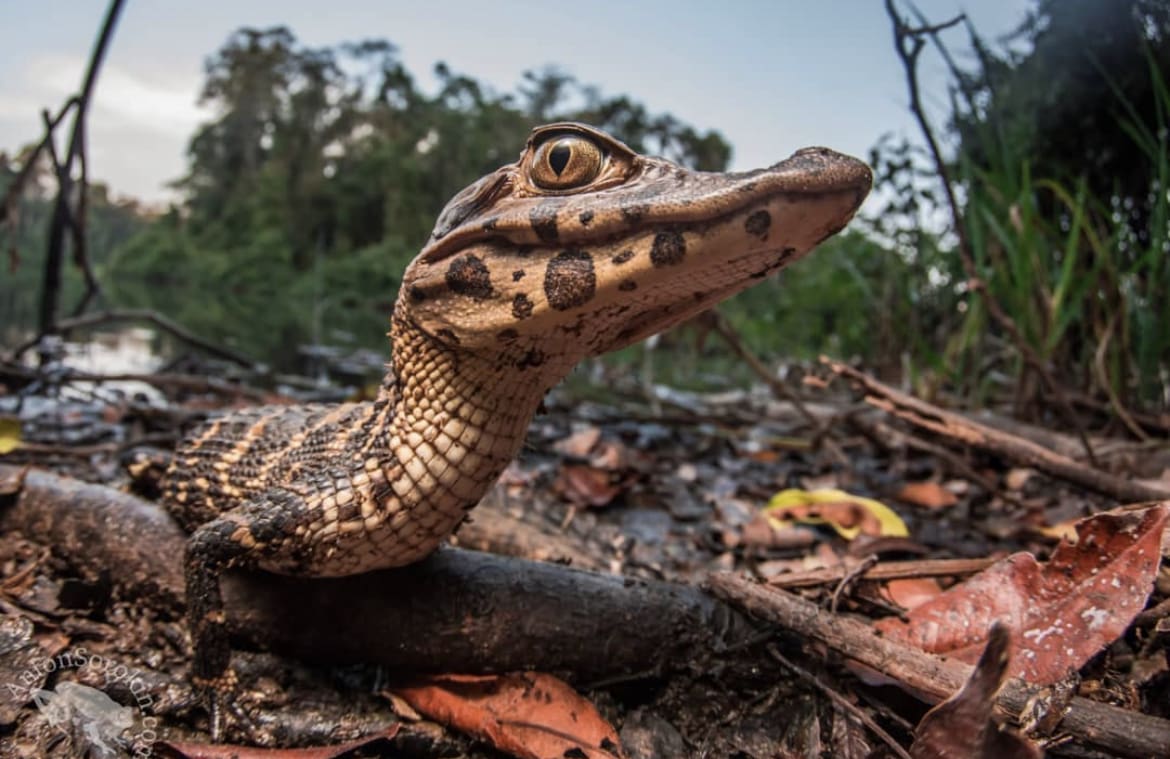
How long does the Black Caiman live?
The Black Caiman is somewhat of an enigma when it comes to aging. These creatures are the Methuselahs of the reptilian world, with lifespans that can stretch up to 70 years or more in the wild. This impressive longevity is even more remarkable considering the harsh and competitive environment they call home.
Living such long lives allows them to grow to impressive sizes, but it also means they play a long-term role in their ecosystem’s balance. The older, larger caimans are crucial in controlling populations of other species, ensuring a healthy, functioning ecosystem. However, reaching such a ripe old age isn’t guaranteed; it requires surviving the gauntlet of threats they face from the moment they crack through their eggshells.
Are Black Caiman aggressive?
The term “aggressive” might conjure images of a relentless predator, always on the hunt for its next meal. However, when it comes to Black Caimans, “opportunistic” might be a more fitting description. Sure, they’re apex predators, but they don’t go looking for trouble or attacking without reason. Their interactions with humans have been relatively rare, and incidents usually occur when they feel threatened or when humans inadvertently enter their feeding grounds.
Within their natural habitat, Black Caimans exhibit a level of aggression that’s typical for predators of their size, especially during mating season or when defending their young. But this aggression is mostly directed towards their prey or in competition with other males. As with many wild animals, respecting their space and understanding their behavior goes a long way in coexisting peacefully.
@rmbonaldo
Are Black Caimans territorial?
Yes, Black Caimans can be quite territorial, especially during breeding season. However, their concept of territory is not as fixed as in other species. Their territorial behavior is more about securing a prime spot in the water for catching food or finding a mate rather than defending a specific patch of land or water.
These territories can overlap, particularly in areas rich in resources, leading to occasional skirmishes between individuals. However, these confrontations are usually brief, with the dominant caiman asserting its dominance without escalating to serious injury. The ability to share overlapping territories showcases an adaptability and tolerance that ensures the species’ survival, allowing them to thrive in the diverse and often challenging environments of the Amazon.
How fast is the Black Caiman?
When it comes to speed, Black Caimans are the stealth bombers of the Amazonian waterways. In their preferred aquatic environment, they can achieve bursts of speed that make them formidable hunters, capable of catching even the most agile fish or unsuspecting mammal on the water’s edge. While exact speeds are hard to quantify due to their ambush hunting style, it’s clear that their acceleration in water is impressively swift, enabling them to snatch prey before it realizes the danger.
On land, however, Black Caimans are less agile, moving with a lumbering gait that belies their potential for short bursts of speed. While they can certainly hustle to defend territory or chase off threats, they are most at home and most dangerous in the water, where their true speed and agility can be unleashed.
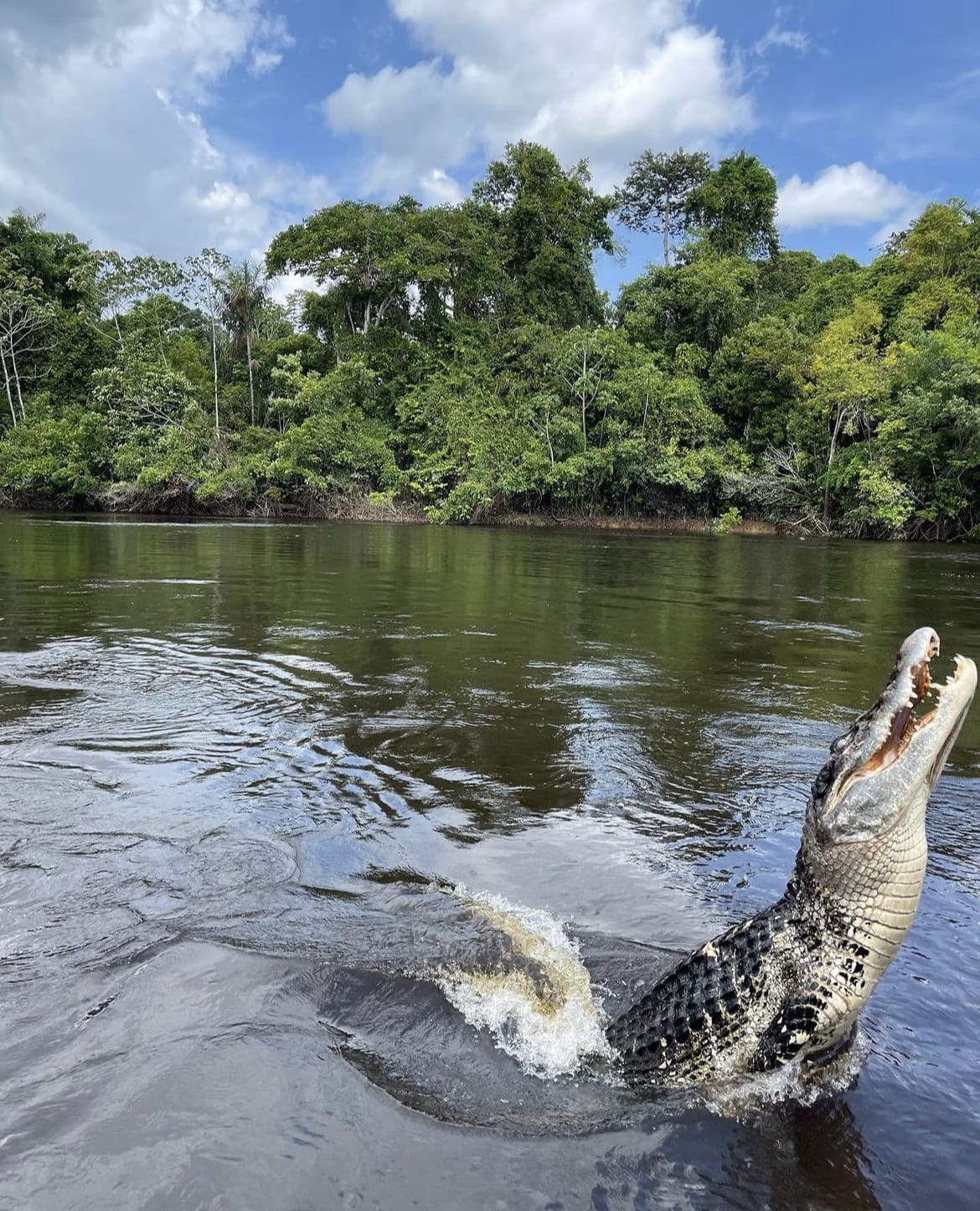
Can Black Caiman kill people?
The thought of a Black Caiman’s powerful jaws is enough to send shivers down anyone’s spine, and yes, they are more than capable of causing fatal harm to humans. However, incidents of Black Caimans attacking people are extremely rare. These creatures generally avoid humans, and most negative encounters occur when humans encroach on their territory or disturb them unintentionally.
It’s important to maintain a healthy respect and caution when in areas known to be inhabited by Black Caimans. By understanding their behavior and habitats, people can significantly reduce the risk of unwanted encounters. Conservationists and locals alike emphasize coexistence, respecting the Caiman’s role as a key predator in the ecosystem while taking steps to ensure human safety.
Where do Black Caiman live?
Black Caimans are the shadowy monarchs of freshwater habitats across the Amazon Basin. This vast area provides a variety of environments for them to call home, including slow-moving rivers, lakes, flooded forests, and even man-made reservoirs. Their adaptability to different aquatic environments is a testament to their evolutionary success, allowing them to thrive from the Guianas in the east to the Andean foothills in the west.
These habitats offer the perfect blend of resources for Black Caimans, from abundant prey to secluded nesting sites. The diversity of the Amazon Basin also means that Black Caimans play a pivotal role in multiple ecosystems, acting as apex predators and keystone species that help maintain the ecological balance. Protecting these habitats is crucial not just for the survival of the Black Caiman but for the myriad of species that share their home.
How many Black Caiman are there in the wild?
Estimating the exact number of Black Caimans in the wild is a challenging task, given the vast and often inaccessible areas of the Amazon basin they inhabit. However, conservation efforts and research studies in recent years suggest that their population is recovering from the brink of extinction experienced in the mid-20th century, due to unregulated hunting for their valuable hide.
Conservation programs, habitat protection, and stricter hunting regulations have played crucial roles in this recovery. While it’s heartening to see their numbers on the rise, the Black Caiman is still classified as a species of least concern with a caveat that constant monitoring and conservation efforts are essential to prevent a decline in their population. The exact numbers remain elusive, but the trend towards recovery is a positive sign for the species and the ecosystems they help regulate.

Are Black Caiman endangered?
Despite significant recovery efforts, the Black Caiman still faces challenges that put pressure on its populations in certain areas. Historically hunted to near extinction, the species now grapples with habitat loss, pollution, and the illegal pet trade as ongoing threats. While they are currently listed as ‘Conservation Dependent’ by the IUCN, this status could easily backslide without continued conservation efforts and habitat protection.
Their situation is a stark reminder of the delicate balance between human activity and wildlife conservation. The Black Caiman’s story is one of cautious optimism, showcasing the positive impact of conservation while highlighting the need for ongoing vigilance to ensure these ancient predators continue to thrive in their natural habitats.
Threats to Black Caiman in the wild
The resurgence of the Black Caiman population is a conservation success story, but the battle is far from over. Habitat destruction due to deforestation, agricultural expansion, and the construction of dams poses significant threats to their natural habitats. Pollution from mining and agricultural runoff further exacerbates the challenges, contaminating the waterways that are crucial for the Black Caiman and the species they prey upon.
Illegal hunting, while greatly reduced, still occurs in some areas, driven by demand for their skin and meat. Additionally, climate change is an emerging threat, with the potential to alter the delicate balance of their aquatic ecosystems. The cumulative impact of these threats underscores the importance of comprehensive conservation strategies that include habitat protection, anti-poaching measures, and community engagement to ensure the Black Caiman’s survival for generations to come.
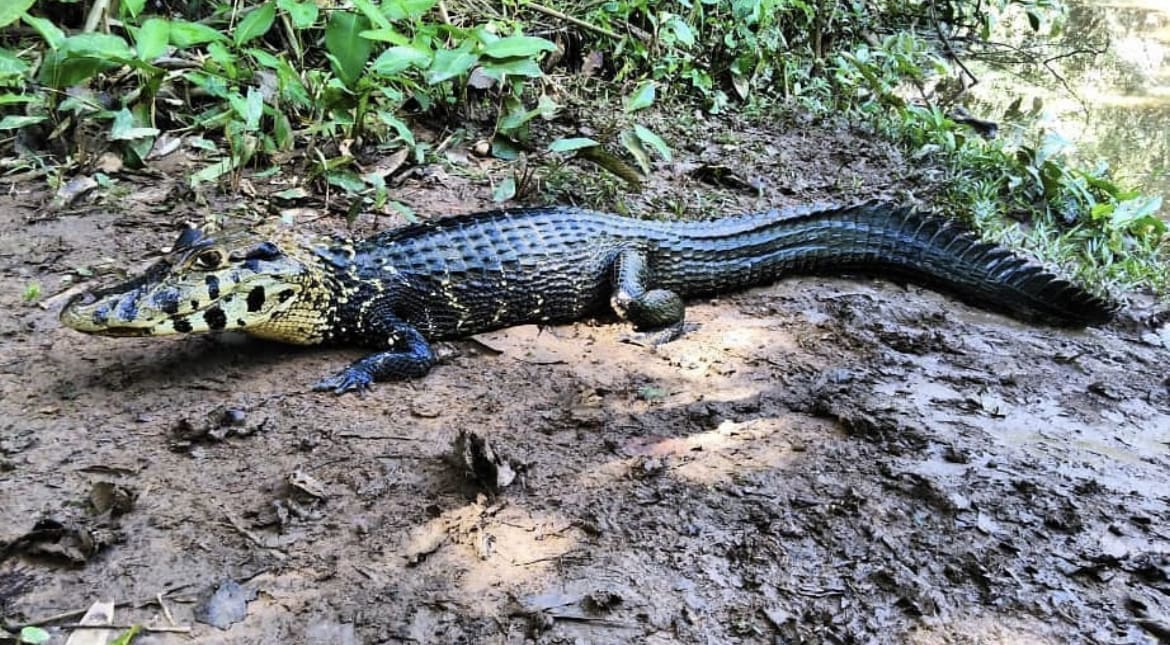
Where to see Black Caiman in the wild
For wildlife enthusiasts and adventurous souls, witnessing a Black Caiman in its natural environment is an unforgettable experience. The Amazon basin, with its sprawling rivers and flooded forests, offers prime locations for Black Caiman sightings. National parks and wildlife reserves in countries like Brazil, Peru, and Colombia are excellent starting points. The Pantanal, the world’s largest tropical wetland area, is another hotspot for those hoping to catch a glimpse of these predators in action.
Guided tours, especially those focusing on eco-tourism and conservation, provide opportunities to see Black Caimans while respecting their natural habitats. Experienced guides can lead you to the best spots for observation, ensuring a safe distance that protects both the animals and visitors. The best times for sightings are usually at dusk or dawn when Black Caimans are most active, offering a chance to witness their hunting prowess or basking behaviors.
Tips for spotting Black Caiman in the wild
Spotting a Black Caiman requires patience, respect for nature, and a bit of know-how. Here are some tips to enhance your chances of a successful sighting:
- Stay Quiet and Patient: Black Caimans are masters of stealth. Keeping quiet and still can increase your chances of observing their natural behavior.
- Use Binoculars: To maintain a safe distance, binoculars are essential. They allow you to observe the Caimans without intruding on their space.
- Look for Eye Shine: At night, use a flashlight to look for the reflective glow of their eyes above the water’s surface. This can be a magical way to spot them in the darkness.
- Respect their Habitat: Always remember you’re a guest in their home. Avoid disturbing the environment or the animals.
- Safety First: Always prioritize safety, both yours and the Caimans’. Never attempt to approach them closely, and always explore with a knowledgeable guide.
Facts about The Black Caiman
- Black Caimans are the largest species of Caiman and among the biggest freshwater predators in the world.
- They play a crucial role in their ecosystem, acting as apex predators that help control the populations of other species.
- Despite their fearsome appearance, attacks on humans are extremely rare and usually a result of provocation or mistaken identity.
- Black Caimans have a unique social structure, gathering in groups for feeding or basking but generally leading solitary lives.
- Conservation efforts in recent decades have helped recover their populations from the brink of extinction, showcasing the positive impact of environmental protection initiatives.
Myths about The Black Caiman
- Myth: Black Caimans are man-eaters. Fact: They primarily feed on fish and other aquatic creatures. Human attacks are rare and usually due to misunderstanding.
- Myth: They are aggressive and territorial. Fact: While they can be territorial during mating season, they generally avoid humans and can coexist peacefully when not provoked.
- Myth: Black Caimans are overpopulated and a threat to local communities. Fact: Their numbers are only now recovering, and they play a vital role in the ecological balance of their habitats.
